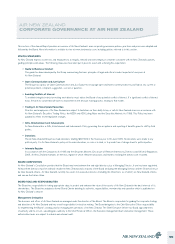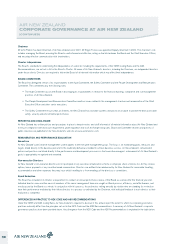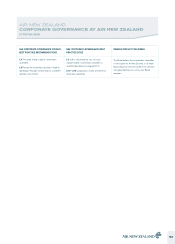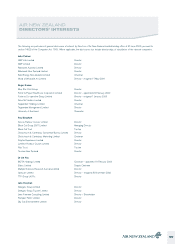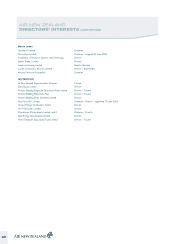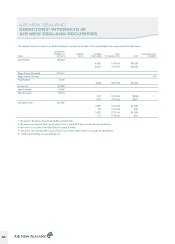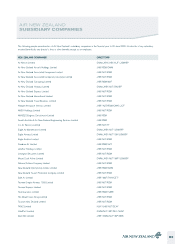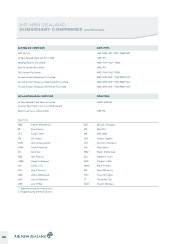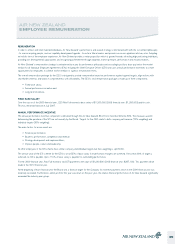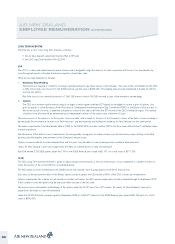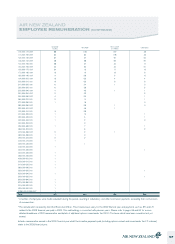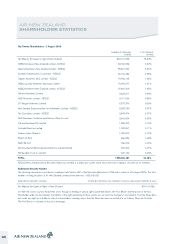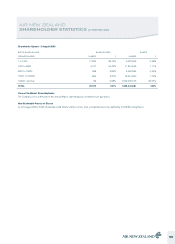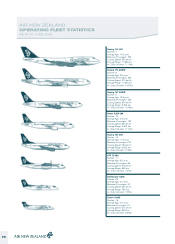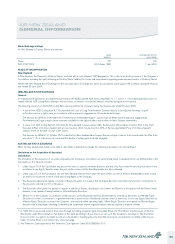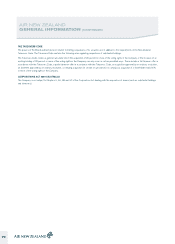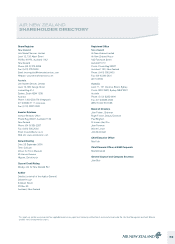Air New Zealand 2009 Annual Report Download - page 67
Download and view the complete annual report
Please find page 67 of the 2009 Air New Zealand annual report below. You can navigate through the pages in the report by either clicking on the pages listed below, or by using the keyword search tool below to find specific information within the annual report.
AIR NEW ZEALAND
EMPLOYEE REMUNERATION
REMUNERATION
In order to attract and retain talented individuals, Air New Zealand’s performance and reward strategy is intertwined with both the recruitment philosophy
- to source inspiring people, and our capability development agenda - to nurture future leaders and provide succession pipelines into key roles. Adopting
an holistic view of the employee experience, Air New Zealand provides a value proposition which is geared towards attracting high performing individuals,
providing rich developmental opportunities and recognising achievement through targeted, market premium, performance and reward initiatives.
Air New Zealand’s remuneration strategy is underpinned by a pay for performance philosophy and accordingly positions base pay below the market
median for all Individual Employee Agreements (IEAs) including the Chief Executive Officer (CEO) and uses annual performance incentives to create
opportunities for employees to achieve market median or superior remuneration levels.
The overall remuneration package for the CEO is designed to provide remuneration based on performance against agreed targets, align actions with
shareholder interests and balance competitiveness with affordability. The CEO’s total remuneration package is made up of three components:
• Fixed base salary;
• Annual performance incentive and
• Long term incentives.
FIXED BASE SALARY
Over the course of the 2009 financial year, CEO Rob Fyfe earned a base salary of $1,200,000 (2008 financial year: $1,200,000) paid in cash.
This has remained fixed since July 2007.
ANNUAL PERFORMANCE INCENTIVE
The annual performance incentive component is delivered through the Air New Zealand Short Term Incentive Scheme (STI). The measures used in
determining the quantum of the STI are set annually by the Board. Targets for the CEO relate to both company performance (70% weighting) and
individual targets (30% weighting).
The main factors for assessment are:
• Financial performance;
• Business performance, competition and revenue;
• Strategy development and implementation;
• Improve people, culture and leadership.
All other employees in the STI scheme have similar company and individual targets but their weighting is split 50:50.
The annual value of the STI scheme for the CEO is set at 55% of base salary if all performance targets are achieved. If less than 90% of target is
achieved, no STI is payable. Up to 110% of base salary is payable for outstanding performance.
For the 2009 financial year, Rob Fyfe earned a total STI payment to the value of $1,240,800 (2008 financial year: $287,100). This payment will be
made in the 2010 financial year.
At the beginning of each financial year the Board sets a financial target for the Company for incentive payments which in the 2009 financial year was
materially exceeded. Furthermore, whilst profit for the year was down on the prior year, the relative financial performance of Air New Zealand significantly
exceeded the industry peer group.
65


